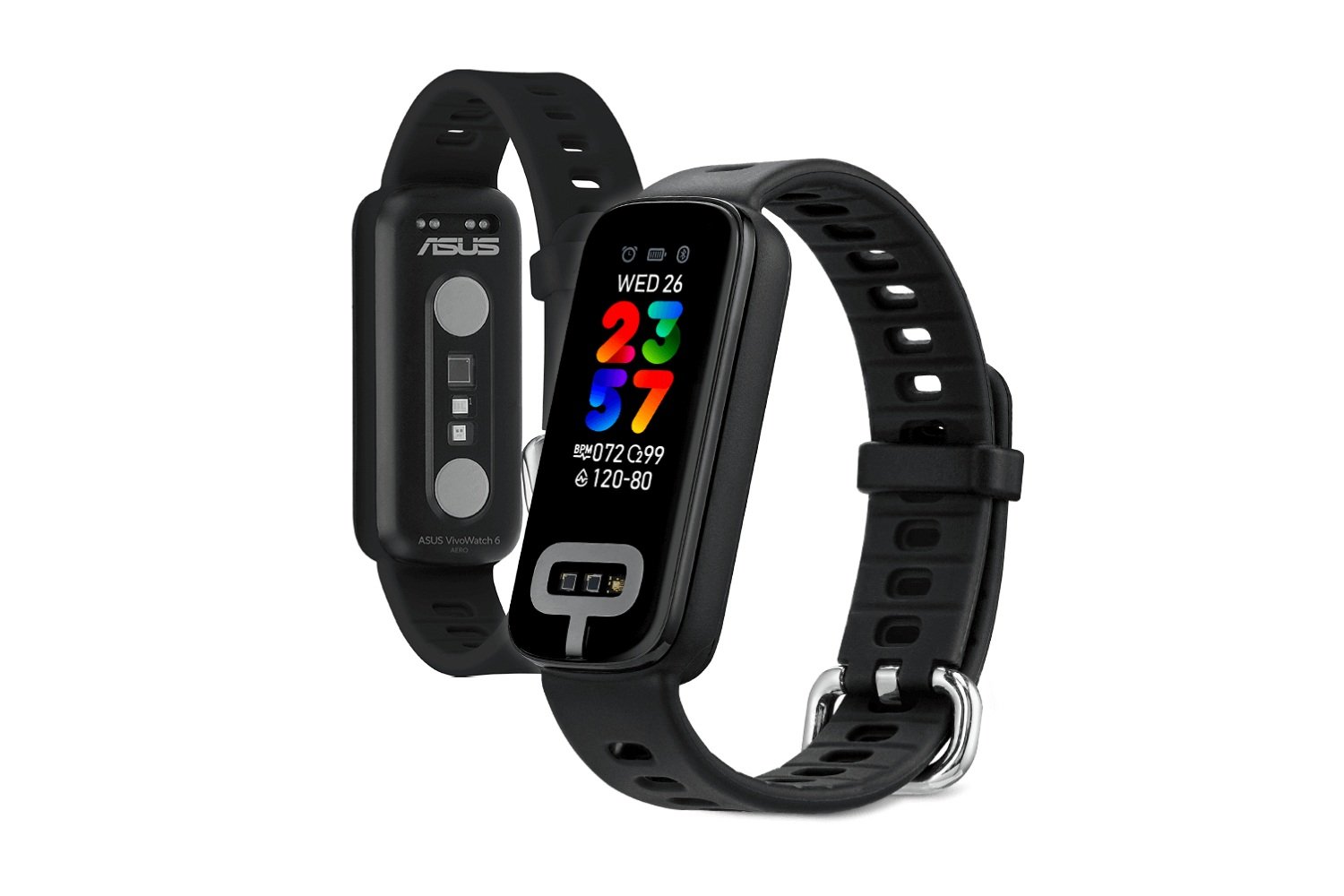Innovation often comes from the places you least expect. For example, Asus claimed it cracked the code for measuring blood pressure with its slim-form VivoWatch 6 Aero. Most other smartwatch makers are working on passive BP readings through the cuff (or a sensor in constant contact with the wrist), but Asus seems to think the real answer is to face its sensors outwards and get users to regularly check up on their health with “instant” readings right through your fingertip.
You don’t have to go back very far to find smartwatches that have tried to offer accurate blood pressure readings. Every major watch maker is trying to push blood pressure monitoring in a variety of different ways. The latest Samsung Galaxy Watches require you to sit in place while the PPG sensor takes a blood oxygen measurement. The typical method for checking blood pressure is with the classic inflatable cuff. That doctor’s office staple is called a sphygmomanometer (a word which, by itself, will win you a game of Scrabble), and it determines pressure by first blocking blood flow, then finding the pressure when blood is no longer restricted. Similar to that age-old tool, the Huawei Watch D2 from earlier this year to monitors blood pressure passively at regular intervals with a pressure sensor and technology akin to an “inflatable airbag”. If that sounds a little out of left field, Asus’ solution is even more off the cuff—literally.
Asus’ VivoWatch 6 Aero watch asks users to put their finger on a front sensor for active BP measurements. In a video, Asus shows how users will need to keep still for a few seconds while it takes a reading. It will then offer a blood pressure reading in millimeters of mercury (mm/Hg) on-screen or through a connected health app. Unlike other passive measurements pushed by the largest wearables brands, Asus’ solution requires users to be aware enough to consistently monitor BP. For those prone to hypertension (high blood pressure) or hypotension (low blood pressure), it may speed up your regular testing process, if it’s as accurate as Asus claims it is. It’s not quite the “holy grail” of smartwatch sensing tech, which is still accurate blood glucose monitoring. Samsung has indicated it’s working on blood glucose monitoring for its upcoming watches and Apple is also looking for a way to bring reliable blood glucose monitoring to the wrist.
The Asus VivoWatch Aero 6 is looks like other FitBit-style health trackers apart from that sensor, and its other sensors and features are familiar. The wrist-facing sensors include PPG (photo-plethysmography) and ECG (electro-cardiogram). Like most modern wrist wearables, that ECG sensor uses LED lights to monitor your heart rate and pulse transit time (PTT). The rear PPG passively determines blood oxygen levels as well. The watch’s extra photo-plethysmography sensor is on the 1.1-inch watch face. That PPG can estimate blood pressure by measuring how light passes through your fingertip. It can also take an active reading of your blood oxygen level.
Despite Asus claiming a lot of firsts with this watch, it’s not likely you’ll get to use these features in the U.S. The VivoWatch 6 Aero product page specifically mentions the blood pressure and ECG functions’ availability “may vary by region.” Neither the product page nor press release mention anything about clearance for the U.S. The product page also mentions that the VivoWatch 6 Aero is “not a medical device.” We reached out to Asus to learn if the company was in the process of getting U.S. Food and Drug Administration approval, and we’ll update this post when we learn more.
Asus claims the watch supports the Software as a Medical Device (SaMD) standard for monitoring blood pressure on your particular health app, or else you can default to the Asus HealthConnect App. Otherwise, the slim-form watch is light though relatively basic. Including band and the touchscreen, it weighs just 27 grams (equivalent to a little less than a dozen pennies) and Asus claims its 135mAh battery has enough life to last a week without needing to charge. Asus has yet to reveal pricing or availability for the Aero since it showed the watch in a YouTube video last month.
And for now this will be one of the few options available for wearable lovers looking to gather even more health data. Most smart rings, such as the Oura Ring and Samsung Galaxy Ring also can’t monitor blood pressure. Apple has been desperate to make a device that incorporates blood pressure reading, too. Bloomberg’s Apple rumormonger Mark Gurman claimed in January Apple would be able to crack passive blood pressure in a wearable release slated for this year. However, that won’t take the form of any specific readings, and instead will simply offer up notifications if it detects your blood pressure is low or elevated. If you’re looking for a truly accurate blood pressure reading, you still may want to ignore this year’s slate of wearables and pick up a $50 monitor from CVS.




